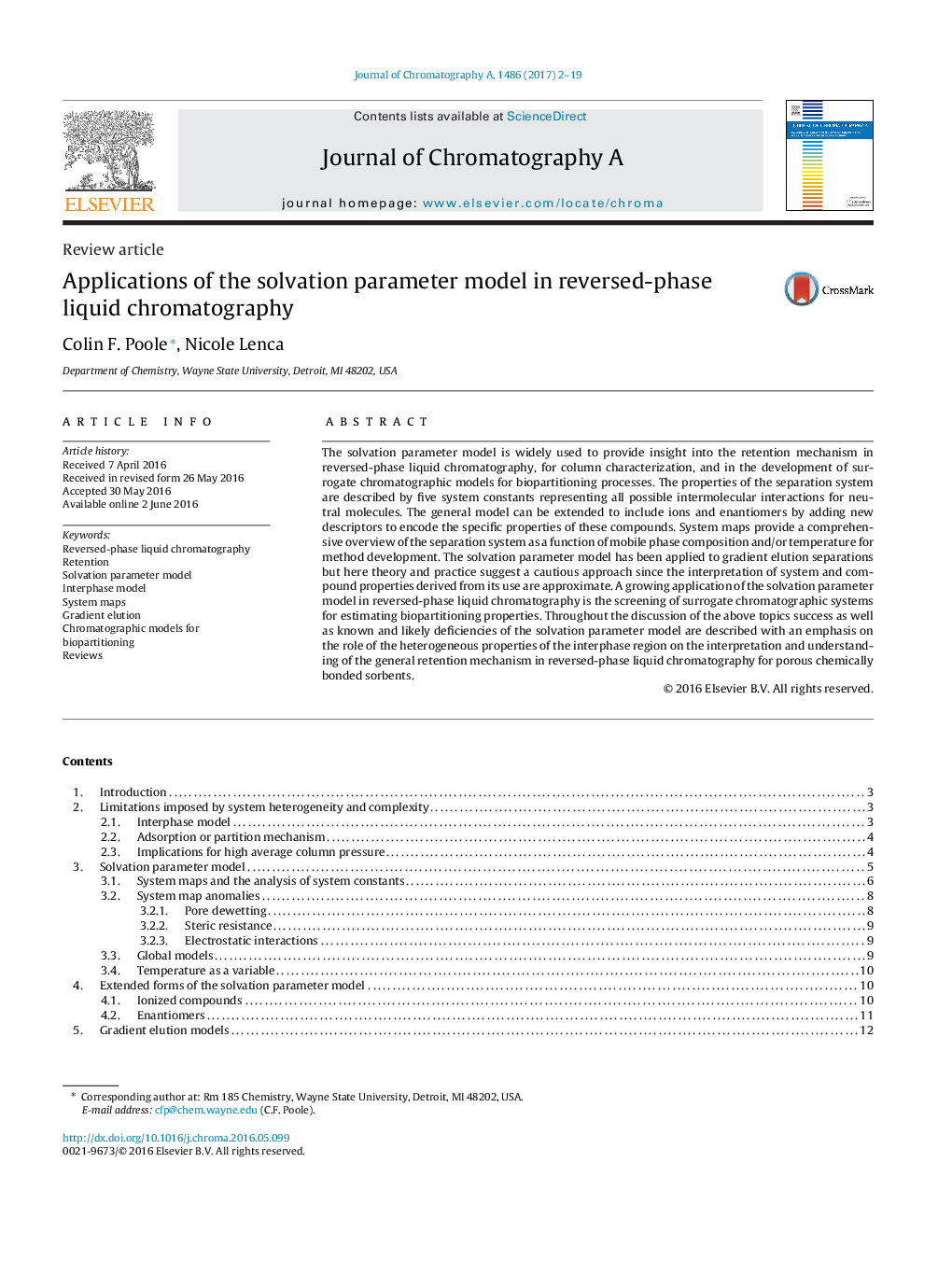| Article ID | Journal | Published Year | Pages | File Type |
|---|---|---|---|---|
| 5135802 | Journal of Chromatography A | 2017 | 18 Pages |
â¢Critical summary of the literature from 2005 to 2016.â¢Interphase model used to interpret retention mechanism.â¢Methods to identify surrogate chromatographic models for biopartitioning provided.â¢Anomalies in system maps explained.
The solvation parameter model is widely used to provide insight into the retention mechanism in reversed-phase liquid chromatography, for column characterization, and in the development of surrogate chromatographic models for biopartitioning processes. The properties of the separation system are described by five system constants representing all possible intermolecular interactions for neutral molecules. The general model can be extended to include ions and enantiomers by adding new descriptors to encode the specific properties of these compounds. System maps provide a comprehensive overview of the separation system as a function of mobile phase composition and/or temperature for method development. The solvation parameter model has been applied to gradient elution separations but here theory and practice suggest a cautious approach since the interpretation of system and compound properties derived from its use are approximate. A growing application of the solvation parameter model in reversed-phase liquid chromatography is the screening of surrogate chromatographic systems for estimating biopartitioning properties. Throughout the discussion of the above topics success as well as known and likely deficiencies of the solvation parameter model are described with an emphasis on the role of the heterogeneous properties of the interphase region on the interpretation and understanding of the general retention mechanism in reversed-phase liquid chromatography for porous chemically bonded sorbents.
